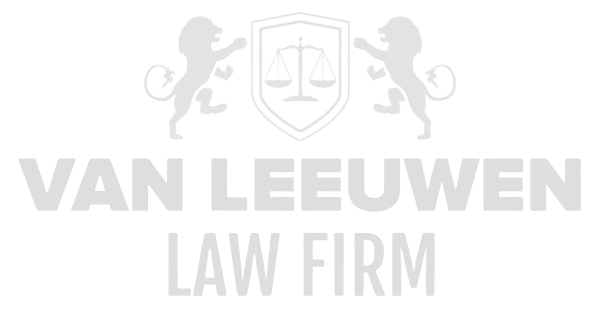Education Technology (EdTech) constitutes a dynamic intersection of digital innovation and pedagogical practice, leveraging software applications, hardware platforms, and networked solutions to transform traditional educational paradigms. By integrating online learning environments, Learning Management Systems (LMS), virtual and augmented reality experiences, adaptive assessment engines, interactive whiteboards, and mobile applications, EdTech fosters personalized instruction, democratizes access to knowledge, and amplifies student engagement. Behind these transformative tools lies a complex legal and operational framework that governs data privacy, intellectual property rights, vendor relations, and regulatory compliance. When parties involved in EdTech deployments—whether multinational corporations, university boards, school districts, or governmental education agencies—face allegations of (a) financial mismanagement, (b) fraud, (c) bribery, (d) money laundering, (e) corruption, or (f) violations of international sanctions, the integrity of educational initiatives can be severely compromised, resulting in disrupted learning outcomes, regulatory sanctions, and lasting reputational harm.
Financial Mismanagement
Financial mismanagement in EdTech projects often arises through flawed budgeting of platform licensing, misallocation of grant funding, or inadequate oversight of subscription renewals and hardware procurement. Failure to accurately forecast per-student licensing costs, underestimation of infrastructure scaling expenses for peak usage periods, or misclassification of capital expenditures versus operational costs can precipitate budget overruns that impede platform availability and support services. School boards and corporate directors carry fiduciary responsibilities to establish transparent financial controls—such as detailed line-item budgeting, periodic variance analyses comparing forecasted versus actual expenditures, and dual-authorization protocols for large purchases. When such controls are absent or ineffective, surprise deficits may emerge mid-academic year, leading to abrupt service terminations, renegotiation of vendor agreements under distressed conditions, and diminished confidence among donors, taxpayers, and institutional stakeholders.
Fraud
EdTech fraud can take myriad forms, including falsification of usage analytics to inflate adoption metrics, manipulation of student performance data to secure funding or accreditation, or submission of counterfeit certifications for cybersecurity compliance. Vendors may generate synthetic user accounts or inflate active-user statistics to justify higher license fees, while institutions may underreport data breaches to avoid triggering mandatory notification requirements. Detection of such misconduct relies on forensic examination of server logs, cross-validation of learning records with third-party analytics, and independent audits of compliance documentation. Once fraudulent practices are uncovered, contractual remedies typically include rescission of agreements, recovery of ill-gotten license fees, and claims for punitive damages. Regulatory bodies overseeing data privacy and educational standards may also impose administrative fines and sanctions, compounding project disruptions and eroding trust in digital learning initiatives.
Bribery
Bribery risks in EdTech procurement and implementation arise when incentives are provided to influence decision-makers within educational institutions or government procurement offices. Such incentives may involve cash payments, gifts, paid travel, or promises of future consulting engagements in exchange for preferential contract awards, favorable renewal terms, or accelerated approval of pilot programs. These corrupt practices violate anti-bribery statutes—such as the U.S. Foreign Corrupt Practices Act and the UK Bribery Act—as well as public-sector procurement regulations. Mitigation measures require robust third-party due diligence, transparent scoring matrices for vendor evaluations, mandatory ethics training for all personnel involved in procurement, and secure whistleblower channels to report suspicious solicitations. Failure to enforce these safeguards can lead to multi-million-dollar fines, debarment from future tenders, and personal criminal liability for institutional officers, resulting in halted EdTech rollouts and significant reputational loss.
Money Laundering
The high value of large-scale EdTech contracts and grant-funded projects presents opportunities for money laundering through padded invoices, phantom subsystems, or prepaid, multi-year service agreements used to obscure illicit funds. Criminal actors may exploit complex payment chains involving resellers, integrators, and subcontractors to layer and integrate proceeds from unlawful activities. Effective anti–money laundering (AML) controls in the EdTech context include stringent Know-Your-Customer (KYC) procedures for all contracting parties, continuous transaction monitoring to detect irregular payment patterns, and independent AML audits. Contractual provisions should grant audit rights over billing records, require disclosure of ultimate beneficial ownership, and empower suspension of services upon identification of suspicious transactions. Non-compliance with AML obligations can trigger regulatory enforcement actions, asset-freeze orders, and criminal prosecution of those involved, while undermining financial relationships with educational grant agencies and banking partners.
Corruption
Corruption intersects with EdTech through nepotistic engagement of resellers, collusion among bidding vendors, and diversion of project funds to shell companies linked to institutional insiders. Such malfeasance distorts fair competition, inflates implementation costs, and breaches fiduciary duties owed by educational boards and administrators. Detection efforts involve forensic procurement audits, review of communications for evidence of undue influence, and financial tracing of payments to related entities. Preventative strategies include deployment of e-procurement platforms with immutable audit logs, mandatory rotation of contract-approval committees, and establishment of anonymous reporting mechanisms for staff and students. Upon exposure of corrupt conduct, swift legal and administrative actions—such as contract termination, asset seizure orders, and referral to criminal authorities—are necessary to contain damage. Sanctions may include disqualification of implicated officials, disgorgement of illicit gains, and institutional sanctions that jeopardize future funding and accreditation.
Violations of International Sanctions
EdTech initiatives that cross international borders must navigate a complex web of export controls and sanctions administered by bodies like the United Nations, the European Union, and national agencies such as the U.S. Office of Foreign Assets Control (OFAC). Violations can occur if virtual classroom software or data-analytics tools are deployed in embargoed territories, or if hardware shipments include components subject to dual-use restrictions. Compliance frameworks should integrate real-time screening of all partners against updated sanctions lists, geolocation-based access controls in learning platforms, and legal review of cross-border data transfers. Detailed system logs—capturing IP addresses, geolocation metadata, and transactional timestamps—provide essential evidence of due diligence. Infractions may result in substantial fines, revocation of export privileges, and criminal charges against responsible officers. The resultant disruptions can force suspension of programs, invocation of force-majeure clauses, and costly re-architecture of delivery infrastructures to restore lawful operations and safeguard institutional standing.











